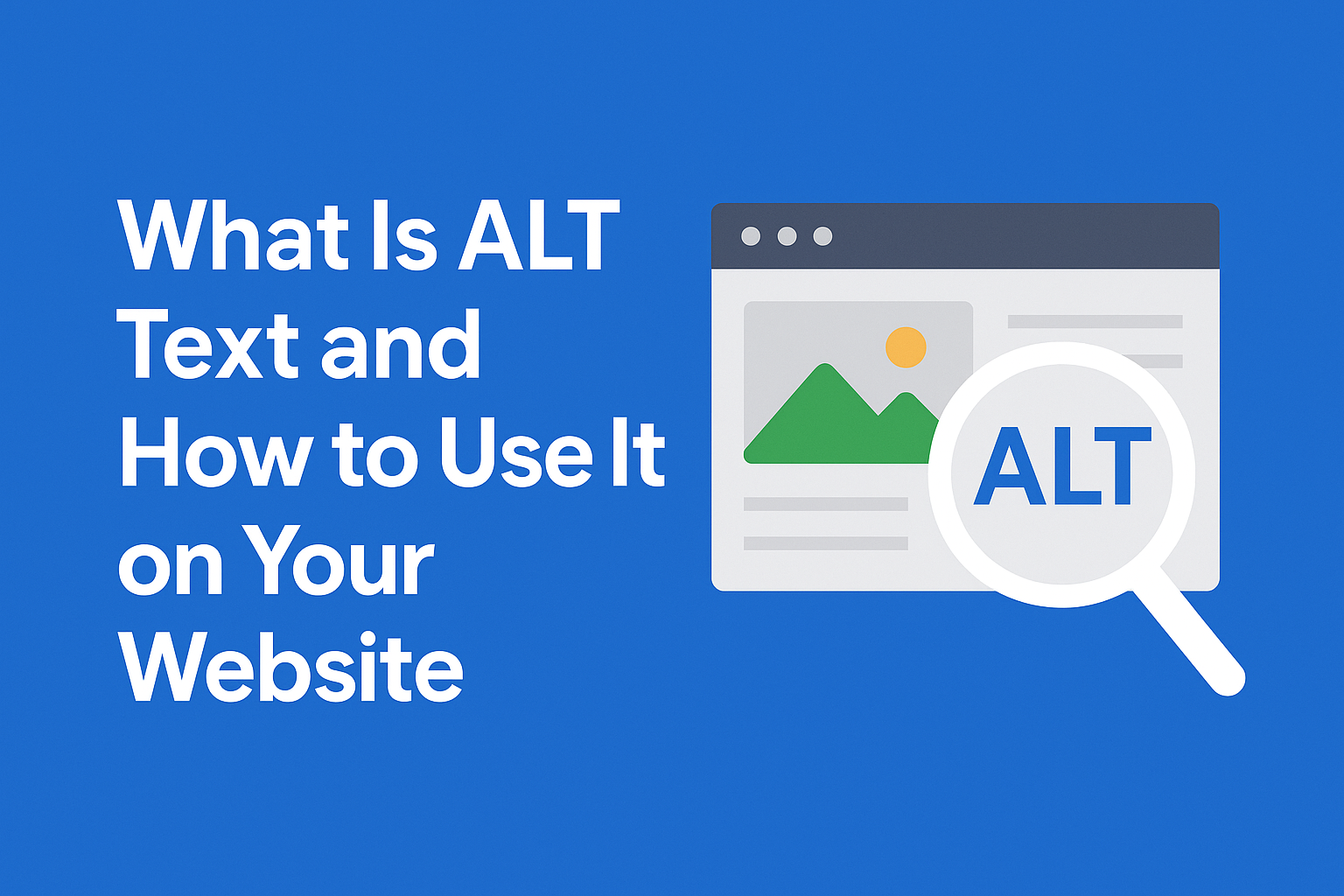
What is ALT Text and How to Use it in My Website
When browsing the web, images often speak louder than words. But what happens when those images don’t show up or someone can’t see them at all? That’s where ALT text steps in. Short for “alternative text,” ALT text is a written description of images that improves accessibility for users with visual impairments and strengthens your website’s SEO. If you’re a local business owner trying to get found online and serve all your customers well, understanding ALT text is a must.
Table of Contents
Understanding ALT Text: Purpose and Benefits
What Is ALT Text?
ALT text is a brief HTML attribute attached to an image that describes its content. It exists for two critical reasons: to help those using screen readers understand visual content, and to tell search engines what the image is about.
Why ALT Text Matters for Accessibility
For visually impaired users, ALT text makes the digital world more inclusive. Screen readers read this text aloud so users can understand the image’s message or function. Without meaningful ALT text, you might be unintentionally cutting out a portion of your audience.
SEO Benefits of ALT Text
Search engines like Google can’t “see” your images they rely on ALT text to understand what those images depict. Well-written ALT text improves your rankings in image search results and boosts your overall on-page SEO, making your site more discoverable.
User Experience and Load Failures
If an image fails to load because of a slow connection or broken link, the ALT text is displayed instead. That helps users still understand the page’s intent and layout, especially important on mobile or in areas with poor service.
Writing ALT Text that Works
ALT text isn’t about keyword stuffing or fluffy filler, it’s about being useful, relevant, and respectful of your user’s time and needs.
Tips for Writing Effective ALT Text:
-
Keep it short and focused: 100–150 characters is usually ideal.
-
Describe the purpose, not the format: Don’t say “image of” just describe what it is or what it’s doing.
-
Match the image’s context on the page: Think like your reader what would they want to know?
Different Types of Images and How to Handle Them
-
Decorative images: Use
alt=""to tell screen readers to skip them. -
Functional images: Describe what the image does. Example: “Search icon” or “Add to cart button.”
-
Informative images: Provide a summary of the key content, like “Chart showing sales growth from 2019 to 2023.”
-
Complex images: Use short ALT text and offer a more detailed description nearby or link to a longer explanation.
Need a Hand with Your SEO?
If you’re a local business owner juggling image uploads, website updates, and SEO strategy, don’t go it alone. City Web Company specializes in helping small businesses like yours get found by customers online with services tailored to your budget and goals. Let us make your website not just visible, but truly accessible.
Common ALT Text Mistakes to Avoid
Even with good intentions, it’s easy to slip up. Here’s what to watch for:
-
❌ Keyword stuffing for SEO (Google hates this)
-
❌ Using vague terms like “graphic” or “logo” with no context
-
❌ Relying solely on AI-generated ALT text
-
❌ Forgetting to write ALT text entirely!
Always ask yourself: “If I couldn’t see this image, would this ALT text give me what I need to know?”
How to Add ALT Text in Popular Website Builders
Most platforms make it easy. Here’s how to do it yourself:
-
WordPress: Upload your image via the Media Library and fill out the “Alt Text” field on the right.
-
Shopify: Use the ALT text field under each product image in the admin.
-
Wix: Click the image, select “Settings,” then add SEO (ALT Text).
Tools to Help You Audit and Improve Your ALT Text
-
✅ WAVE Accessibility Checker – Find missing or unhelpful ALT text.
-
✅ Microsoft Accessibility Checker – Built into Office for quick reviews.
-
✅ NVDA or VoiceOver – Try screen readers to test how your site sounds.
For a smoother experience, make it part of your workflow to check image descriptions before you publish.
Best Practices for ALT Text Management
-
Run periodic audits on your entire site.
-
Train team members who upload content to follow your ALT text standards.
-
Use a consistent tone and style for image descriptions.
-
Document your ALT text policy in your content style guide.
Final Thoughts: ALT Text Is a Tiny Tweak with a Massive Payoff
ALT text might only take a few seconds to write, but its impact is long-lasting. It makes your site more accessible, strengthens your SEO, and shows visitors (and search engines) that your business pays attention to the details.
Ready to Build a More Searchable, Accessible Website?
If this all feels like a lot to manage, City Web Company is here to help. Whether you’re just getting started with SEO or looking to make your site WCAG-compliant, we’ll handle the details so you can focus on your business. Click here to get a free strategy consultation and put your business on the map.
